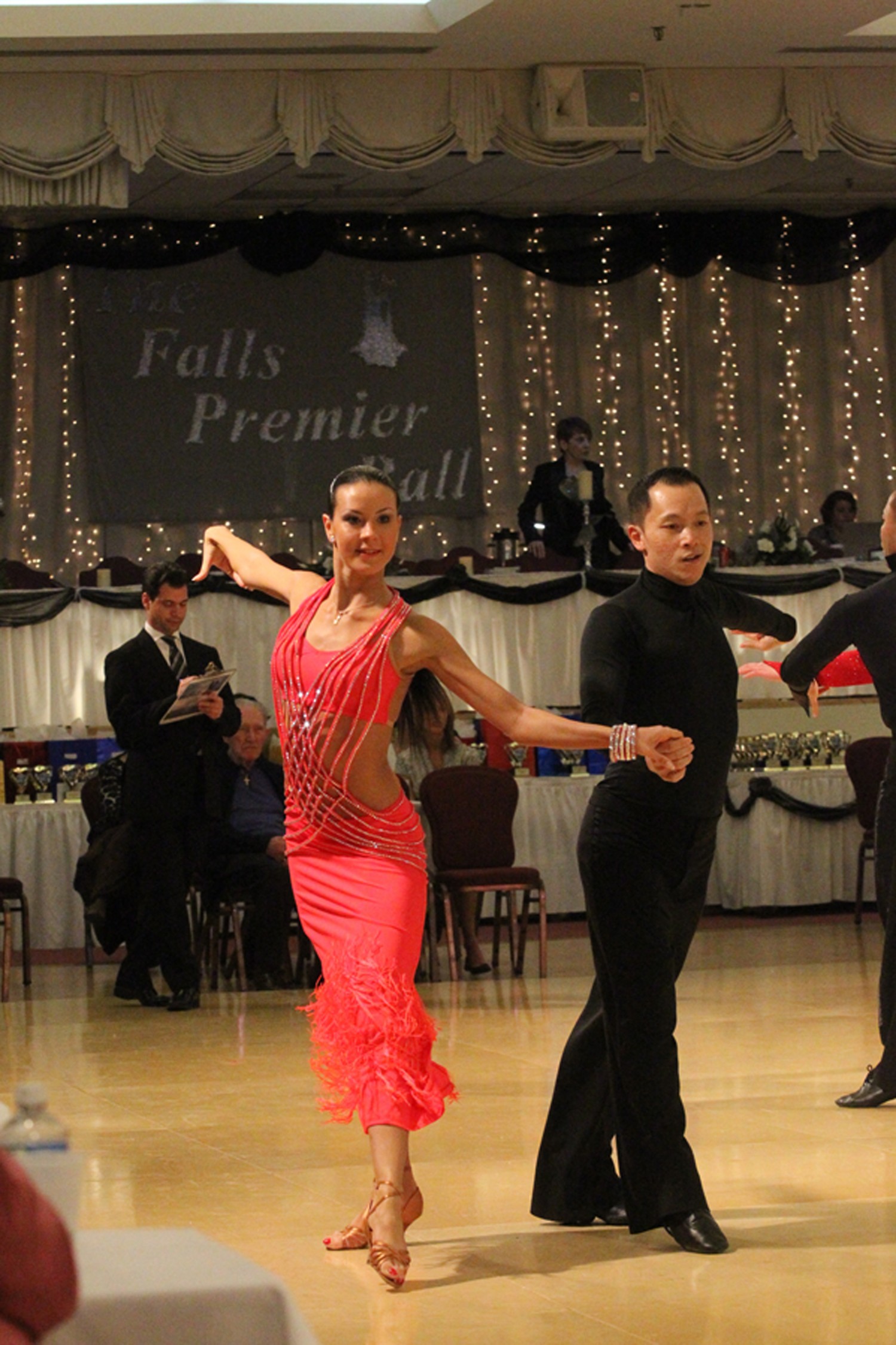5 Musical Accents You Should Be Hitting

Let’s start with an exercise: What’s your favourite food? Would it still be your favourite if it was all you ate for a year? Of course not – it would get boring! Unfortunately, this is typical of most ballroom dancers: For all the musical expression they have, they might as well be dancing to a metronome.
Learning musicality is often difficult, because we begin by learning very understandable, clear-cut movements, until someone shouts: ‘Now, be musical!’ We can make a good beginning however, by identifying the different accents in music, and what we might do when we hear them.
1. The Downbeat
The downbeat is the most common music accent, occurring as a regular accent throughout the song. You might hear it expressed through the drums in a swing song, the accordion in a tango, or the hi-hat in a foxtrot.
Since the downbeat is so common, you can make a mess of dance trying to express every one. If the beat is strong however, you can make your general dancing slightly stronger, through sharper movements of the body or feet, or quicker weight changes.
2. The ‘1’
The first note that begins every ‘phrase’ of music, the ‘1’ is worth listening for, because it reflects either a change or a repetition of the notes played previously. As most phrases of music happen over a count of 8 (or 4 downbeats), you can learn to hear and anticipate when the ‘1’ is coming in your dance.
You can express the ‘1’ by beginning a new step, changing the speed, or changing the distance traveled. Try to match slower, simpler movements to the quieter parts of the song, and break out the high energy ‘picture steps’, when the chorus begins.
3. The Legato Note
‘Legato’ in music are longer, drawn-out notes, like the strings in a waltz. It’s also possible for an entire song to be legato, at least relative to more high-energy tunes. Legato notes are often used to express deep feelings, like sorrow or romance.
Since legato phrases are softer, smoother, and more emotional than their staccato counterparts, make your dance softer and smoother as well. Focus on ‘filling the music’ with continuous movement, rather than a start-stop action. Imagine you and your partner are moving together on a well-made rollercoaster with no bumps.
4. The Staccato Note
The opposite of legato, staccato reflects sharp, or sudden beats. Staccato music tends to be full of passion and fire, and usually have more energy than their legato cousins. Drums and percussion instruments are classic examples of staccato sounds.
Practice reflecting staccato phrases of music with move staccato movement – quicker snaps of the body, for instance, or shifting your weight more quickly, then pausing to let your feet catch up. A great way to get a sense of legato vs staccato is by comparing waltz to tango dancing respectively.
5. The Break
Less common in ballroom music but very powerful, some songs have a literal break in the sound, to create tension, anticipation, or to give the music that follows or precedes greater power. Breaks aren’t always complete – the drums might cut out for example, to make room for passionate vocals.
Breaks are perfect for dramatic, drawn-out movements, like the tango oversway, or the Viennese Waltz x-line. They usually only happen once per song though, so bonus points if you catch it!
About the Author
Ian Crewe has been dancing ballroom for over 18 years, and has a Licentiate in American smooth and rhythm. His passion for dance eventually led him to blogging and the World Wide Web. Ian currently teaches at the Joy of Dance Centre, Toronto, ON, Canada.

